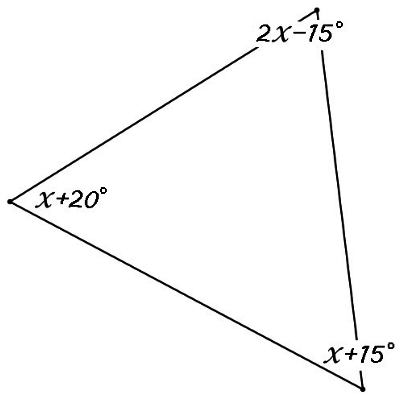11th Grade > Mathematics
STRAIGHT LINES MCQs
:
C
The point lies on axis of x, if y = 0.
Therefore, 1+3+c3 = 0 ⇒ c = -4.
:
A
Since OA and OP will be parallel only when O, A and P are collinear.
Therefore, ∣∣
∣∣001341xy1∣∣
∣∣ = 0 ⇒ 4x - 3y = 0.
:
B
x = a+b+c3, y = b−c+c−a+a−b3 = 0
Hence, centroid lies on x - axis.
:
A
(x−a)2+y2=(x+a)2⇒y2=4ax
Note: This is also the definition of parabola y2 = 4ax.
:
D
Let S(x, y), then
(x+1)2+y2+(x−2)2+y2=2[(x−1)2+y2]
⇒ 2x +1 + 4 - 4x = - 4x + 2 ⇒ x = -32
Hence it is a straight line parallel to y-axis.
:
A
Given:
Centroid = (4,6)
Vertices (6,4) & (2,6)
Let the Co-ordinates of C be (x3, y3)
x1=6, x2=32, y1=4 & y2=6
Centroid (4,6)=(x1+x2+x33,y1+y2+y33)
⇒4=6+2+x33 and 6=4+6+y33
⇒ x3=4 and y3=8
∴ Third vertex is (4,8).
:
C
Let the centroid of the triangle be (x, y).
The centroid of a triangle is given by (x1+x2+x33,y1+y2+y33)
x=4+3+23=3
y=−3−2+83=1
:
C
Let AD be the internal bisector of angle BAC cutting BC at D.
Now, AB=√(5−2)2+(2−3)2=√10and AC=√(5−6)2+(2−5)2=√10
since AD is the internal bisector of angle BAC,
∴ BDDC=ABAC=√10√10=11
∴ Coordinates of D are (2+62,3+52) i.e. (4, 4)
So, the equation of AD is
y−2=2−45−4 (x – 5) or 2x + y – 12 = 0
:
B
In any triangle centroid divides the line joining orthocenter and circumcentre internally in the ratio 2 : 1.
Applying section formula to find the point which divides the line joining (0,0) in the ratio 2:1 , we get the coordinated of centroid equal to (2,4).
:
A
a = x - intercept, b = y - intercept
2h=a+b, k2=ab
xa+yb=1, substitute (1, 1)
1a+1b=1
a + b = ab
2h=k2⇒y2=2x

















